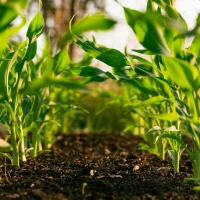Organic agriculture is gaining popularity around the world as an environmentally friendly and sustainable approach to farming. With an increased emphasis on preserving the health of our planet and the well-being of consumers, the demand for organic food has skyrocketed in recent years. In this article, we will demystify sustainable agriculture by exploring over 33 key principles for going organic. From understanding the importance of soil health to implementing natural pest control methods, this comprehensive guide will provide you with the knowledge and tools to embrace sustainable farming practices.
Introduction to Sustainable Agriculture
Sustainable agriculture refers to a holistic approach to farming that aims to preserve the natural resources on which agricultural systems depend. It focuses on promoting a healthy ecosystem, conserving natural resources, and producing food in harmony with nature. By avoiding the use of synthetic inputs such as chemical fertilizers and pesticides, sustainable agriculture aims to minimize the negative impact on the environment and human health.
In recent years, there has been a growing concern about the negative effects of conventional farming practices, including soil erosion, water pollution, and the degradation of biodiversity. As a result, many farmers and consumers have embraced organic agriculture as an alternative that prioritizes ecological balance, animal welfare, and sustainable farming methods.
Importance of Soil Health
One of the fundamental principles of sustainable agriculture is soil health. Soil serves as the foundation for agricultural production and plays a vital role in nutrient cycling, water filtration, and carbon sequestration. Here are some key principles for maintaining and improving soil health in organic farming:
- Crop rotation: Rotating crops helps to break pest and disease cycles, improve soil fertility, and reduce the dependence on chemical inputs. By alternating the types of crops grown in a particular field, farmers can naturally control pests and diseases while replenishing soil nutrients.
- Cover cropping: Cover crops are grown primarily to protect and improve the soil between main crops. They help prevent soil erosion, build organic matter, and enhance soil structure. Common cover crops used in organic farming include legumes, grasses, and brassicas.
- Compost and organic matter: Adding compost and organic matter to the soil improves its structure, moisture-holding capacity, and nutrient content. Compost acts as a natural fertilizer, providing essential nutrients to plants while promoting beneficial microbial activity in the soil.
- Minimal tillage: Excessive tillage can disrupt soil structure and lead to erosion. Implementing minimal tillage practices, such as no-till or reduced tillage, helps to preserve soil structure, enhance moisture retention, and reduce weed pressure.
Natural Pest Control Methods
In organic agriculture, pest control is approached in a holistic and eco-friendly manner. Instead of relying on synthetic pesticides, organic farmers utilize various natural pest control methods to manage insect pests and diseases. Some of these methods include:
- Beneficial insects: Encouraging the presence of beneficial insects, such as ladybugs and lacewings, helps control pest populations naturally. By providing habitats and food sources for these beneficial insects, organic farmers create a balanced ecosystem that reduces the need for chemical pesticides.
- Crop diversity: Planting a diverse range of crops helps deter pests by disrupting their life cycles and reducing their ability to spread. In addition, companion planting, which involves growing compatible plants together, can help repel pests or attract beneficial insects.
- Physical barriers: Installing physical barriers, such as row covers or netting, can protect crops from insect pests while allowing air and light to circulate. This method is particularly effective for safeguarding delicate or susceptible plants from pests and diseases.
- Biological controls: Using biological controls, such as nematodes or microbial pesticides, can target specific pests without harming beneficial organisms. Biological controls are naturally occurring organisms or substances that control pests or diseases.
- Trap crops: Planting trap crops, which are attractive to pests, can divert them away from main crops. This method involves sacrificing a portion of the field to protect the rest of the crop.
Nutrient Management in Organic Agriculture
Maintaining proper nutrient balance is essential for maximizing crop productivity and reducing nutrient runoff. Organic farming employs several practices to manage nutrients effectively and sustainably:
- Crop rotations and cover crops: As mentioned earlier, crop rotation and cover cropping play a crucial role in nutrient management. Different crops have varying nutrient requirements, and by strategically planning rotations, farmers can prevent nutrient depletion and improve soil fertility. Cover crops also help to fix nitrogen and scavenge excess nutrients, preventing them from leaching into groundwater.
- Compost and organic fertilizers: Organic farmers rely on compost, manure, and other organic fertilizers to provide essential nutrients to their crops. These natural sources of nutrients release their content slowly, ensuring a steady supply of nutrients throughout the growing season.
- Nutrient budgeting: Analyzing soil tests and creating nutrient budgets enables farmers to determine the nutrient requirements of their crops accurately. By conducting regular soil tests, farmers can adjust their fertilizer application rates accordingly, minimizing nutrient imbalances.
- Efficient irrigation: Proper irrigation practices can significantly impact nutrient management. Over-irrigation can lead to nutrient leaching, while under-irrigation can limit nutrient uptake. Employing efficient irrigation methods, such as drip irrigation or precision sprinklers, ensures that plants receive the necessary moisture without wasting precious water and nutrients.
Biodiversity and Habitat Conservation
Sustainable agriculture places a strong emphasis on promoting biodiversity and conserving natural habitats. By preserving and enhancing biodiversity, farmers can support ecosystem services, maintain natural pest control, and improve overall farm resilience. Here are some key principles for biodiversity conservation in organic farming:
- Hedgerows and buffer zones: Planting hedgerows and creating buffer zones around agricultural fields helps provide habitat for beneficial insects, birds, and other wildlife. These areas serve as a refuge for pollinators and natural enemies of pests, contributing to a balanced and resilient ecosystem.
- Conservation of native species: Protecting and fostering native plant species helps maintain biodiversity and supports local ecosystems. Native plants are adapted to local conditions and provide food and habitat for a wide range of wildlife.
- Avoidance of genetically modified organisms (GMOs): Organic farming prohibits the use of genetically modified organisms. By avoiding GMOs, organic farmers help preserve the genetic diversity of crops and prevent potential negative impacts on ecosystems.
- Wetland and riparian habitat protection: Wetlands and riparian areas are critical habitats for many species and play a crucial role in water filtration, flood control, and soil stabilization. Conserving these habitats benefits both wildlife and the overall health of the ecosystem.
Socioeconomic Considerations in Organic Agriculture
In addition to environmental sustainability, organic agriculture also addresses socioeconomic aspects of food production and distribution. Here are some key principles for promoting social equity and economic viability in organic farming:
- Fair trade practices: Organic certification often aligns with fair trade practices, ensuring that farmers receive fair prices for their produce. Fair trade promotes equitable access to markets and establishes transparent and mutually beneficial relationships between farmers, traders, and consumers.
- Farm labor practices: Organic farming promotes the fair treatment of farm workers, including providing safe working conditions and fair wages. By prioritizing the well-being of their employees, organic farmers contribute to sustainability on both ecological and social fronts.
- Local and regional food systems: Organic agriculture encourages the development of local and regional food systems, reducing the reliance on long-distance transportation and supporting local economies. By strengthening local food networks, organic farmers can minimize environmental impact and provide fresh, nutritious food to surrounding communities.
Conclusion
Sustainable agriculture is a critical component of ensuring a healthy and resilient food system for future generations. By embracing organic farming practices and adhering to key principles such as soil health, natural pest control, nutrient management, biodiversity conservation, and socioeconomic considerations, farmers can cultivate food in harmony with nature. Understanding and implementing these principles is a significant step towards demystifying sustainable agriculture and contributing to a more sustainable and environmentally conscious future.










